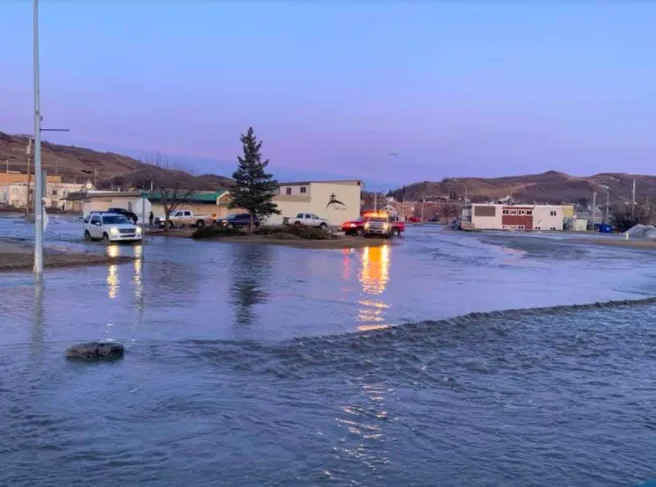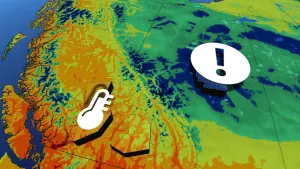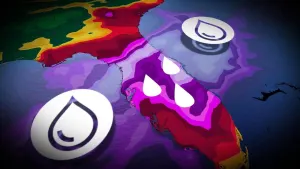
State of local emergency lifted in in Peace River as flood cleanup continues
Ice jams can occur anytime from early winter to late spring depending upon changes in temperature, which can cause alternate freezing and melting of water surfaces.
The state of local emergency declared in the northern Alberta town of Peace River has been lifted after flooding occurred during the weekend.
The Alberta Emergency Alert was issued Saturday night and cancelled on Monday at 9:33 a.m. local time.
According to AEA, downtown traffic was still being disrupted due to the ongoing cleanup. Sections are still closed to traffic and residents were urged to avoid the areas that are blocked off and follow the detours.
The town’s website said the flooding was caused by an ice jam in the culvert of Pat’s Creek on Saturday night. “The jam led to overflowing which has caused flooding near the 100 Ave. and 100 St. area of downtown Peace River,” the statement read.
An update posted on April 19 at 8:40 a.m. stated crews were on the scene during the overnight hours and water pumping helped the majority of the water recede. The dikes did not appear to have been breached.

Flooding in downtown Peace River on Saturday, April 18, 2020. Credit: RiverCountry949/Facebook
An ice jam occurs when water builds up behind a blockage of ice. They can form either when ice blocks a river and forms a lake, or when ice chunks in a river are blocked by something and build up to form a dam. Sometimes pieces of floating ice are carried with a stream’s current and then accumulate at an obstruction.
Ice jams can develop near river bends, mouths of tributaries, points where the river slope decreases, downstream of dams, and upstream of bridges. The water that is held back may cause flooding or flash flooding upstream. If the obstruction suddenly breaks then flash flooding may occur downstream, which can cause massive flooding events.
Ice jams can occur anytime from early winter to late spring depending upon changes in temperature, which can cause alternate freezing and melting of water surfaces.
Weather Network meteorologist Jessie Uppal says that the variation in temperatures largely contributed to the ice jam. “There was about 30 cm of snow on the ground in Peace River for the first week of April with temperatures consistently below freezing, however, day time highs were in the low single digits during the second week of the month,” Uppal explains.
“Over the last couple of days temperatures neared or reached double digits, which caused a widespread melt and brought the snow on the ground to less than 5 cm.”










